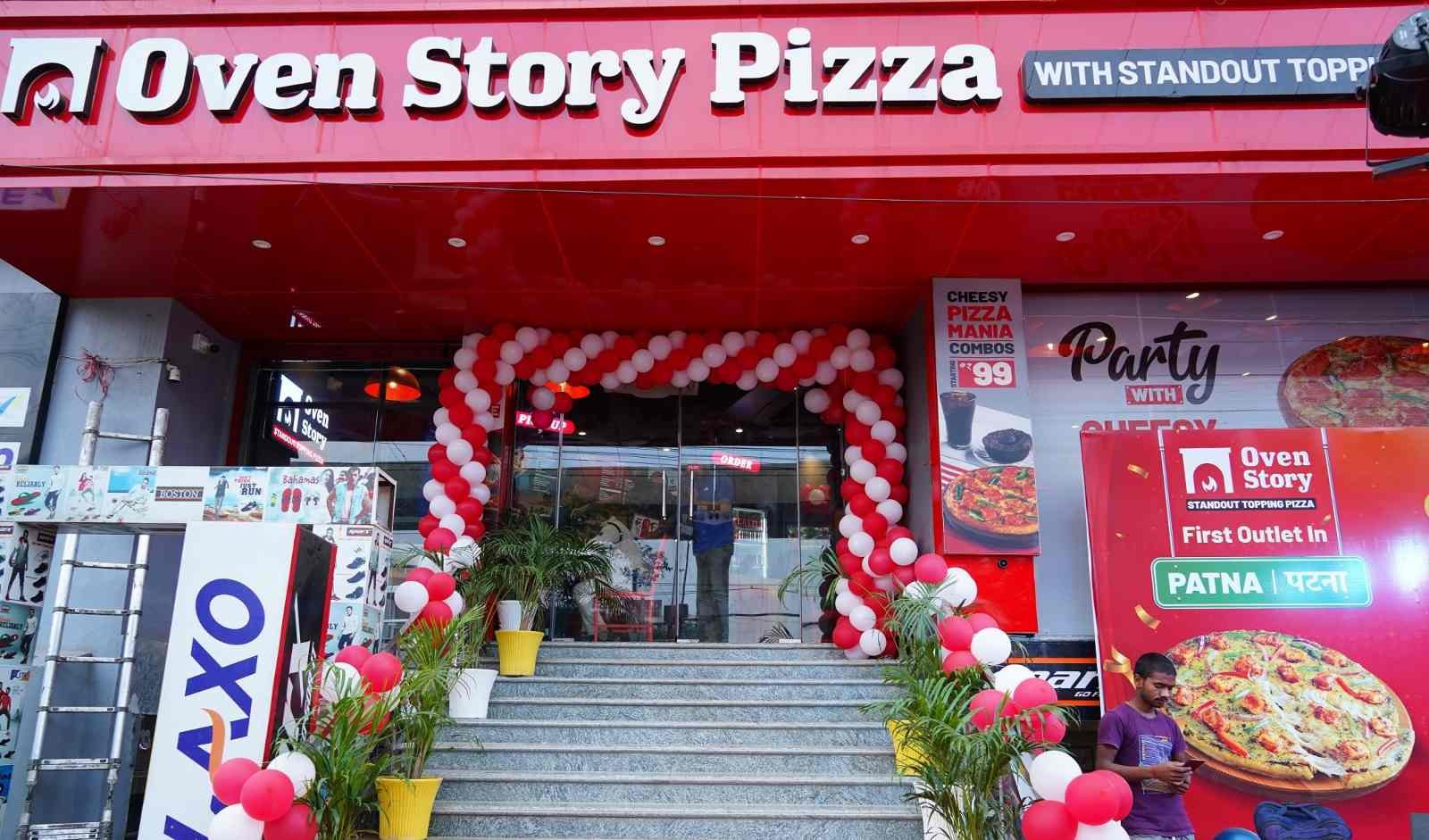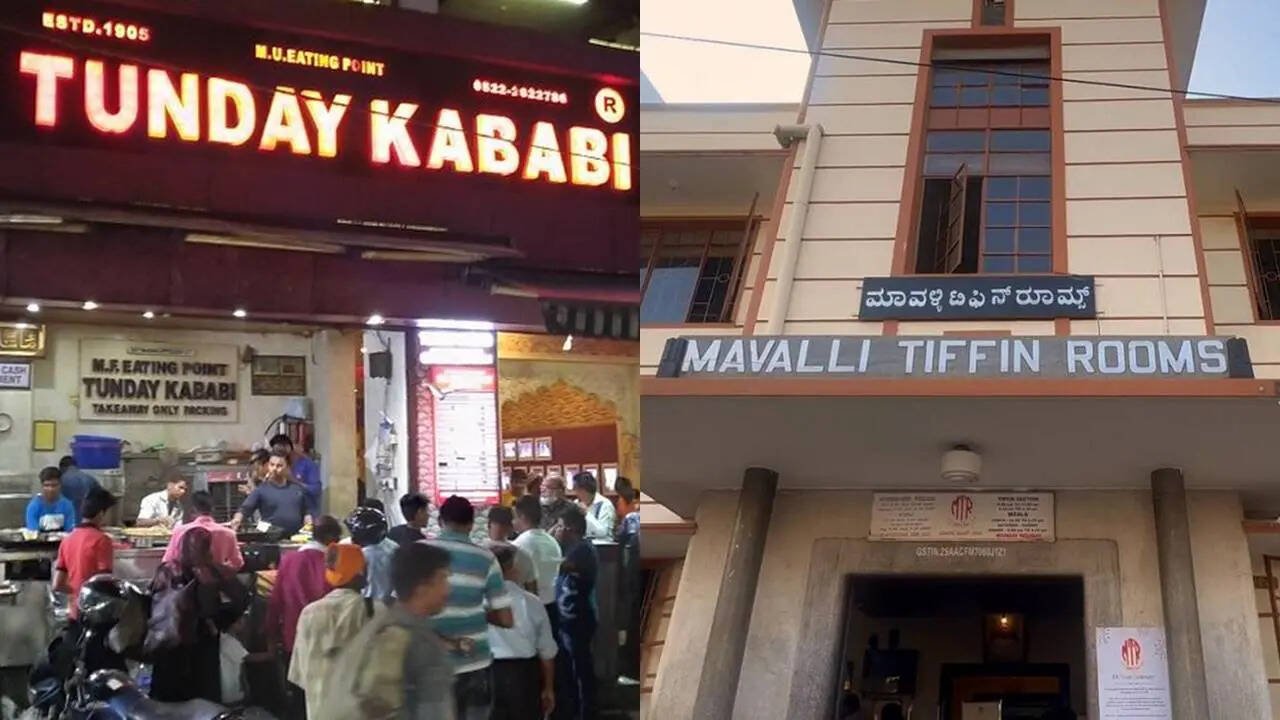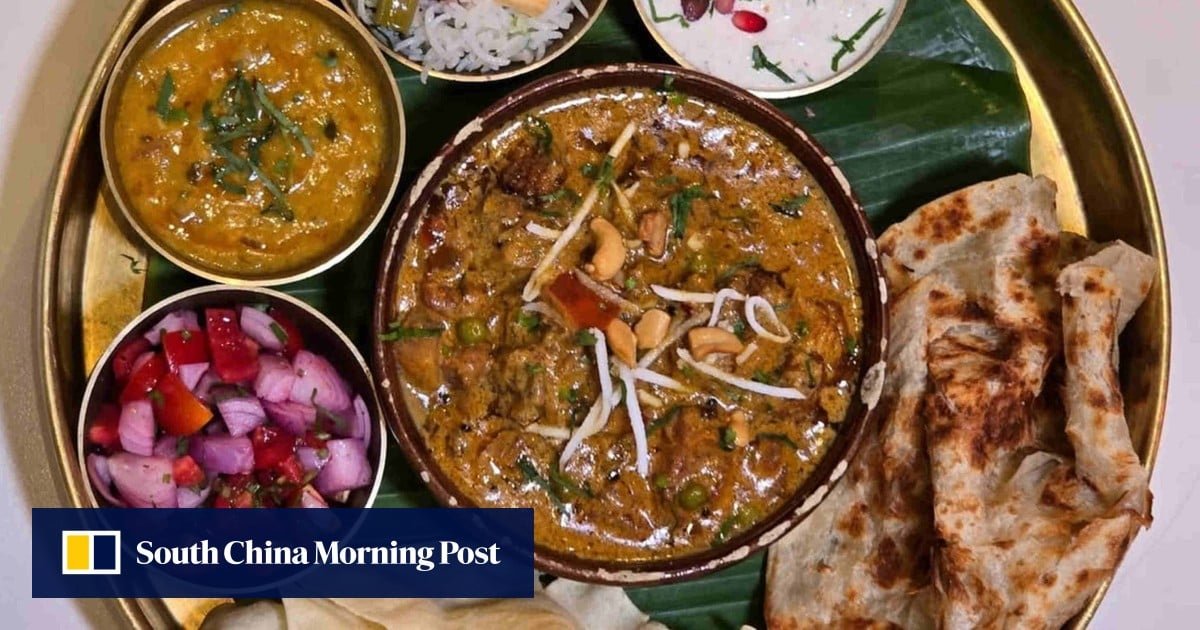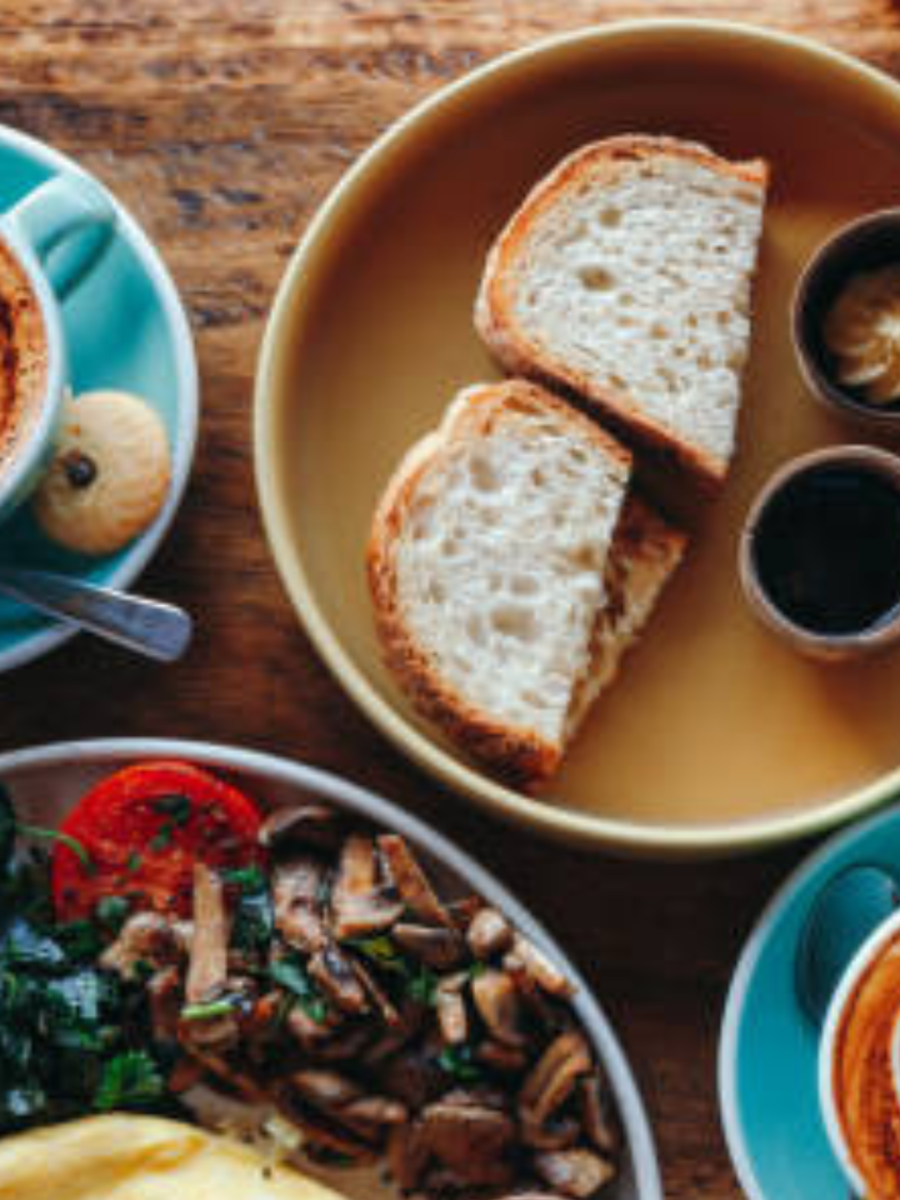Restaurants & Food
Why Restaurants are Ditching Big Cities for Small Towns

Back in 2017, food trucks were a big trend in India. Customers who were looking for varied flavours and options found food trucks to be an uncommon and interesting concept of serving food. Their love for street food rekindled with this format, which is why food trucks were being preferred to dine-in ambiences. The cheap and cost-effective solution to starting a restaurant generated a lot of revenue for the industry.
Opening a food truck is much cheaper than opening a restaurant, and therefore a much more tangible goal for those wishing to serve their community. With a comparably low initial investment, people can see their financial freedom just a few years down the road. Once they break even and pay off any loans, as long as their food truck continues to make a profit, they will have gained financial freedom doing what they love. This is one of the major reasons why people enter this domain.
However, after a phase of prolonged growth, food trucks, just like the other restaurant formats, had to bear the brunt of Covid-19. There was a sharp decline in the restaurant industry in Q2 of 2020. Today, even though the dine-in restaurants and QSR chains have restarted reopening, the future of food trucks is still to be thought about. Many unfortunately have closed their services forever.
The question that now stands is, are food trucks still a viable option after the struggling restaurant industry in India. It is pretty obvious what impact Covid-19 has had on the food trucks in India. Since it’s a business that literally operates on the road, it became all the more unsafe and unhygienic for the customers to visit the food trucks and enjoy their meals in crowds.
With a nationwide lockdown to contain the virus, the streets went empty. People on their way to offices and colleges were no longer there to grab a quick bite off the food trucks. There was no chance of any food or music festivals happening either. All the events or sites where food trucks could make their sales were put on hold or had negligible footfall. The vehicles thus stayed empty and stationary.
Challenges that existed before pandemic
For the food truck business to flourish, some challenges always existed. One can control the food quality and the business plan but can’t control the weather. And in India weather is a huge challenge for the operators. To continue the flow, there should be a proper selection of a location in order to attract the right set of customers / most trafficked areas just at the right time. Thus location always imposed uncertainties.
Dealing with the local municipality and government officials is another challenge in this field and one should have all his/her contacts handy to upkeep the truck on road. Though licensing is not defined for food trucks in India, licenses like FDA license, NOC from traffic police, fire license for kitchen, police NOC, etc are required to be taken which is a tedious process. In India there is no association or regulatory body assigned by the government for establishing a food truck business. Licensing for food trucks in India is highly unorganised and is the most time consuming and burdensome task.
Sagar, Owner of Amigo Food Trucks said, “The food truck business has a huge potential which will be unlocked only when the government comes out with some regulations. This business is much unorganised and the owners of the business face a lot of challenges, due to lack of any regulation, even the municipal corporations and police of cities have no authority to formulate any rules or guidelines.”
Lastly, parking space is a major issue and there is no clarity on rules and regulations pertaining to food truck parking. The food truck owners feel that no designated parking space often affects their business.
Is different from running a restaurant
“We are approaching our three year anniversary in March, in my opinion, I believe that many people that decide to get in the food truck business do not appreciate the amount of work involved, which is the number one reason why they fail. They are not prepared to work so hard, therefore, throwing in the towel within the first year. It is very different from running a restaurant,” Karan Marwar, Owner of a Food Truck in Dehradun stated.
In a restaurant, there are staff for all the different positions required to run the business along with the fact that it is open in the am and close in the pm. With a food truck, the owner may be the Chef, prep cook, line cook, dishwasher, cleaning crew, etc. “If you are running a lunch service along with a dinner service, the truck has to be turned over for each service and then travel to each venue. As you can see it is double if not triple the work,” Marwar added.
However, food trucks fail for the same reasons as restaurants. Owners often lack operating capital, a true understanding of cash flow versus profit and lack an executable plan. And the low barrier of entry attracts a high number of operators that may not be prepared for small business ownership.
Mechanical Failures
“We run expensive businesses. The cost of gas, propane, storage, commercial kitchen rental, employee, not to mention food costs. There are a lot of expenses running a food truck. One expense often gone unnoticed or accounted for is maintenance on your vehicle. Trucks breaks down! Equipment breaks down! Lots of the food truck owners are buying old trucks, they put a new wrap on it and then hit the road. Then a transmission blows, the gas leaks, the radiator breaks, the list can go on and on. Before you know it you have spent thousands of additional dollars that you did not budget for. You have a new truck and have a hard time making ends meet regardless. The cost is too great, and you go under,” Deepika Rao of The Food Truck Company in Pondicherry added.
The food trucks are customised commercial vehicles which come in different sizes. The cost of a vehicle depends on numerous factors. Entrepreneurs often opt for pre-owned vehicles. The cost of customising a truck lies between INR 1 lakh to INR 5 lakh depending on the type of vehicle.
Is there hope?
Even though the impact of Covid-19 has weakened the food truck market, there is still hope left for the same. The convenience that lured customers to visit food trucks means that they are still relevant in the post-pandemic era. However, some extra efforts need to be put in by the food truck owners to attract customers once again.
Food delivery services and takeaways have saved the restaurant industry from draining out. They seem to be the only practical solution for every restaurant format to keep the cash coming in. Many food trucks like the Bombay Food Truck have turned to deliveries looking at the number of customers craving for the food and experience that they offer.
Not just this, many food truck owners have started providing meal kits to keep their business afloat during the crisis by creating a new revenue stream. One can also drive the food truck to small community gatherings and make sales there via catering.
Tapping on the flexibility factor
From the business perspective, food trucks seem to be more survivable than dine-in restaurants, given their operational attributes. The flexibility and freedom to drive the food truck around the city help to attract more customers and visit more places. Unlike dine-in restaurants, where it is impossible to change locations, food trucks can explore more places and gather more customers.
However, if one is looking to open a food truck business amidst the pandemic, one needs to be wary of customer safety. Following social distancing norms should not be forgotten while serving a throng of customers. Food trucks lack dining spaces and ambiences and this bodes well for them. Social distancing can be followed more efficiently in open spaces than a queue limited to the back wall of the restaurant. The absence of dining spaces minimizes the touchpoints responsible for the spread of the virus. Customers can either take away their orders or eat them in their own space, like a car, without having to worry about getting infected by the virus.
Can low overhead costs attract more investors?
One of the chief aims of restaurateurs, amidst the pandemic, is to save their capital and utilize it in the best possible way. No format is as cost-efficient as food trucks, which is why they have high hopes of surviving the pandemic and a great potential for the future.
A food truck business consists of just two staff members, one truck, inventory and one delivery personnel if required. There is no dining space which further cuts the labour and maintenance cost of the ambience. Moreover, a one-time investment in an appropriate truck eliminates the monthly rental costs too.
Even though one might think that, out of all restaurant formats, food trucks might suffer the most losses due to Covid-19 as they are out there on the street, this might not actually be true. The way they operate, in fact, keeps them on the safer side in both safety and financial aspects, thereby making them more viable than other restaurant formats.
In India, food trucks stand a chance because people want good food at reasonable prices available near to them especially in these times when Covid-19 has shaken the economy and business of big and small restaurants. Also, with more people coming into this business scope of finding regional dishes on food trucks is high, giving yet again another area to introspect.
Restaurants & Food
5 Restaurants From India’s Pre-Independence Era That Must Be On Your Bucket List | Food

Iconic Pre-Independence Indian Restaurants Still Thriving in 2025
In a country where recipes are often handed down through generations with the precision of royal heirlooms, there exists a rare breed of restaurants that are not only feeding people but also serving up history – one plate at a time. Long before Instagram reels made food ‘viral’ and before Michelin stars began dictating taste, a few humble yet iconic establishments across India quietly began laying the foundations of what we now call the country’s culinary culture.
These restaurants have survived colonial rule, Partition, wars, food shortages, and fads like “zero oil” cooking. They’ve seen customers arrive on bullock carts, Ambassadors, and Ubers. Their menus haven’t changed much – and that’s precisely the point. To step into one of these is to step into a time capsule – where recipes are sacred, the décor proudly outdated, and every bite comes loaded with stories.
So this Independence Day, if you’re up for some edible nostalgia, here are five pre-1947 restaurants across India that deserve a spot on your bucket list – not just for the food, but for the legacy they carry.
1. Indian Coffee House, Kolkata
Founded: 1876 (Renamed in 1942)
Tucked into the eternally bustling College Street of Kolkata, the Indian Coffee House is less of a restaurant and more of a revolution. Originally set up as Albert Hall during the British Raj, the place transformed into Indian Coffee House in 1942 – and soon became the favourite adda (hangout) spot for intellectuals, poets, professors, and political revolutionaries.
The likes of Satyajit Ray, Amartya Sen, and Subhas Chandra Bose are said to have frequented this smoke-stained, high-ceilinged hall, where the sound of ideological debates was once louder than the clatter of plates.
Today, it still serves simple filter coffee, mutton cutlets, and that distinctive old-school charm. The waiters wear colonial-style uniforms, the walls are soaked in nostalgia, and the service? As delightfully slow as ever – but only because they want you to linger, not leave.
Fun Fact: The coffee here costs under ₹50, and it’s served with a side of political discussion on most tables.
2. Mavalli Tiffin Room (MTR), Bangalore
Founded: 1924
In the heart of Bengaluru’s Lalbagh Road lies a culinary institution that’s been dishing out comfort and consistency for over a hundred years. MTR is where you go not just to eat, but to feel hugged by food. Their masala dosas, crisp on the outside and bursting with spiced potato filling inside, are arguably among the finest in the country.
But the most endearing tale from MTR’s history comes from wartime scarcity. When rice became a luxury during World War II, the kitchen innovated and birthed the now-legendary rava idli – a fluffy steamed semolina cake that’s become a South Indian staple.
Clean, vegetarian, and famously punctual in its service, MTR today operates several outlets, but the original one retains its earthy charm and stainless-steel plates.
Fun Fact: The MTR kitchen runs on a clockwork system – they even have a time chart for dosa batter fermentation.
3. Britannia & Co., Mumbai
Founded: 1923
Step into Britannia & Co. in Ballard Estate, and you’ll feel like you’ve wandered into a Wes Anderson film set – pastel walls, rickety chairs, ancient cash registers, and a portrait of Queen Elizabeth gazing down from the wall. But the real royalty here is the food.
Run by the Kohinoor family, this Parsi restaurant is best known for its Berry Pulao, a fragrant rice dish adorned with barberries imported from Iran, cashew nuts, and tender mutton or chicken. It’s a recipe created by the matriarch, and the restaurant continues to follow it religiously.
The late Boman Kohinoor, the endearing patriarch who would personally greet guests and proudly flash a letter from the Queen, is still fondly remembered by loyalists. The menu also includes classic Parsi dishes like Sali Boti, Dhansak, and caramel custard.
Fun Fact: Boman Kohinoor was such a fan of the British monarchy that he campaigned for years to meet Prince William and Kate Middleton – and finally did in 2016.
4. Tunday Kababi, Lucknow
Founded: 1905
The story of Tunday Kababi is the stuff of culinary folklore. Haji Murad Ali, the one-armed kabab genius who started it all, was nicknamed ‘Tunday’ due to his physical disability – and the name stuck. But it’s the food that’s made the legend immortal.
The original shop in Aminabad continues to sell the iconic Galouti Kebab, a dish said to have been created for a toothless nawab who still craved meat. The kebabs are made using over 100 spices, minced finely and cooked on a tawa until they melt upon touching your tongue.
Tunday’s menu today also features Shami Kebabs, Biryani, and Sheermal – all rooted in the rich Awadhi culinary tradition. Though several offshoots have cropped up across the city, purists still swear by the flavour of the original location.
Fun Fact: The original Galouti Kebab recipe reportedly contains over 160 ingredients, though the exact list remains a closely guarded secret.
5. Karim’s, Delhi
Founded: 1913
Right in the shadow of Delhi’s Jama Masjid lies one of India’s most famous culinary legacies – Karim’s. Founded by Haji Karimuddin, a royal cook’s descendant, the restaurant began as a small eatery to serve those attending the mosque’s Eid prayers.
More than a century later, Karim’s is synonymous with Mughlai cuisine – rich, slow-cooked, unapologetically indulgent. Their Mutton Korma, Nihari, Seekh Kebabs, and Roghan Josh are not just meals – they are feasts that taste of history and tradition.
The ambience might be modest, but the taste remains royal. While newer outlets have sprouted across Delhi and even beyond, nothing beats the smoky charm and cramped quarters of the original location near Gate No.1 of Jama Masjid.
Fun Fact: During Partition, Haji Karimuddin reportedly fled to Meerut, only to return a few years later and rebuild the restaurant from scratch – brick by brick, spice by spice.
A Culinary Walk Through Time
In an era where pop-up eateries, QR-coded menus, and molecular gastronomy rule the roost, these age-old restaurants are reminders of a simpler, richer time. They don’t need reinvention – they are the tradition.
So, if you find yourself planning a trip across India and wondering where to eat, ditch the algorithms and follow the aromas of history instead. You’ll not only savour unforgettable dishes but also taste a bit of India’s past, served hot and with pride.
Restaurants & Food
Street food, sushi, Indian: favourite Hong Kong restaurants of a fermentation expert

Fermentation enthusiast Tommy Leung is the founder of HakkoBako, a food tech start-up that builds fermentation chambers for chefs and mixologists. He also runs Mealthy, a meal prep service in Hong Kong. He spoke to Andrew Sun.
My dad went from Hong Kong to Sweden in the 1970s and opened Chinese restaurants there. I am blessed to have been immersed not only in Chinese food culture but also Swedish.
I am a big fan of the city’s modern Indian restaurants, especially their super-thick and creamy curries. Two favourites are Tagline (Shop G02-G04, G18-G22, Empire Centre, 68 Mody Road, Tsim Sha Tsui. Tel: 2329 3311) and Bengal Brothers (Shop D, Man Hee Mansion, 6 Johnston Road, Wan Chai. Tel: 9245 8774), especially for their Chettinad-style lamb curry. Somehow, these places pack twice or three times more flavour and richness, and I have no idea how they do it.
Restaurants & Food
10 international dishes that are ruling Indian restaurants right now

Korean bibimbap goes Indian
Bibimbap, a mixed rice bowl with veggies, protein, and chilli sauce — is now being made with jeera rice, South Indian podis, and even rajma. It’s colourful, customisable, and totally binge-worthy. The beauty? It brings together carbs, protein, and greens in one hot, satisfying bowl.
-

 Brand Stories2 weeks ago
Brand Stories2 weeks agoBloom Hotels: A Modern Vision of Hospitality Redefining Travel
-

 Brand Stories2 weeks ago
Brand Stories2 weeks agoCheQin.ai sets a new standard for hotel booking with its AI capabilities: empowering travellers to bargain, choose the best, and book with clarity.
-

 Destinations & Things To Do2 weeks ago
Destinations & Things To Do2 weeks agoUntouched Destinations: Stunning Hidden Gems You Must Visit
-

 Destinations & Things To Do2 weeks ago
Destinations & Things To Do2 weeks agoThis Hidden Beach in India Glows at Night-But Only in One Secret Season
-

 AI in Travel2 weeks ago
AI in Travel2 weeks agoAI Travel Revolution: Must-Have Guide to the Best Experience
-

 Brand Stories1 month ago
Brand Stories1 month agoVoice AI Startup ElevenLabs Plans to Add Hubs Around the World
-

 Brand Stories4 weeks ago
Brand Stories4 weeks agoHow Elon Musk’s rogue Grok chatbot became a cautionary AI tale
-

 Brand Stories2 weeks ago
Brand Stories2 weeks agoContactless Hospitality: Why Remote Management Technology Is Key to Seamless Guest Experiences
-

 Asia Travel Pulse1 month ago
Asia Travel Pulse1 month agoLooking For Adventure In Asia? Here Are 7 Epic Destinations You Need To Experience At Least Once – Zee News
-

 AI in Travel1 month ago
AI in Travel1 month ago‘Will AI take my job?’ A trip to a Beijing fortune-telling bar to see what lies ahead | China




